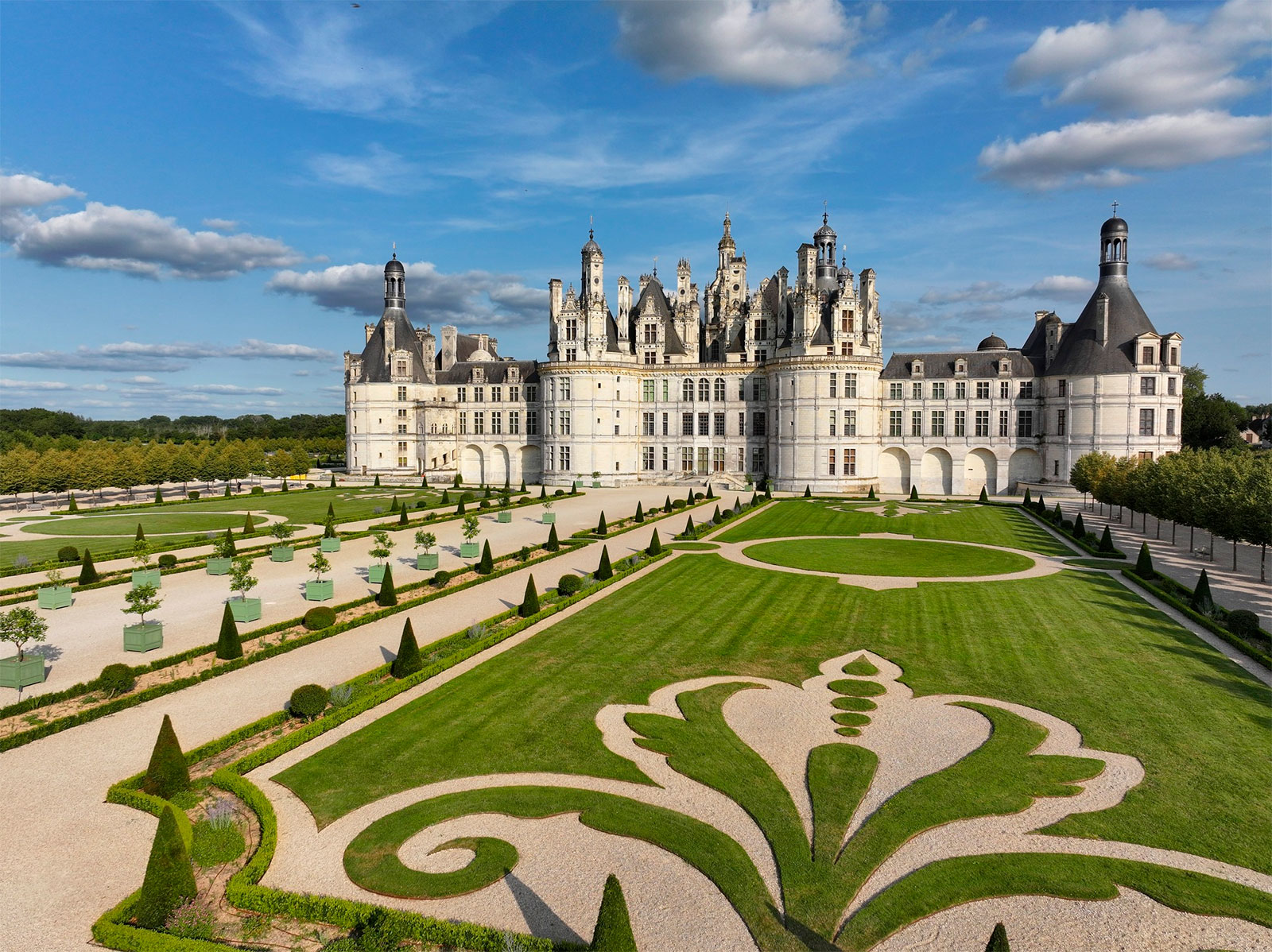Here is an in-depth exploration of Château de Chambord’s history, architecture, and its impact on tourism and the local economy.
Château de Chambord, located in the Loire Valley, is a prime example of French Renaissance architecture. Commissioned by King Francis I in the early 16th century, it is renowned for its distinctive design, including the famous double-helix staircase. As a UNESCO World Heritage Site, it draws approximately 1 million visitors annually, significantly contributing to the regional economy. The château’s vast forest park, spanning over 5,440 hectares, serves as a vital ecological reserve. This article delves into the reasons to visit, its historical significance, unique architectural features, and practical information for tourists.
Why visit the château de chambord
Château de Chambord stands as a monumental example of French Renaissance architecture, attracting visitors worldwide. Its unique design elements and historical significance make it a must-see destination.
One of the château’s most notable features is its double-helix staircase, attributed to Leonardo da Vinci. This architectural marvel consists of two intertwined spirals that allow individuals to ascend and descend without crossing paths. The staircase exemplifies the innovative design principles of the Renaissance period.
The château boasts an impressive 440 rooms, 365 fireplaces, and 84 staircases, reflecting the grandeur of its era. The exterior is adorned with elaborate façades, towers, and chimneys, showcasing intricate craftsmanship.
Surrounding the château is a vast forest park covering 5,440 hectares, enclosed by a 32-kilometer wall. This area serves as a sanctuary for diverse wildlife, offering visitors opportunities for nature walks and wildlife observation.
The Château de Chambord is not only an architectural masterpiece but also a cultural hub. It hosts various events, including exhibitions, concerts, and historical reenactments, providing visitors with immersive experiences into France’s rich heritage.
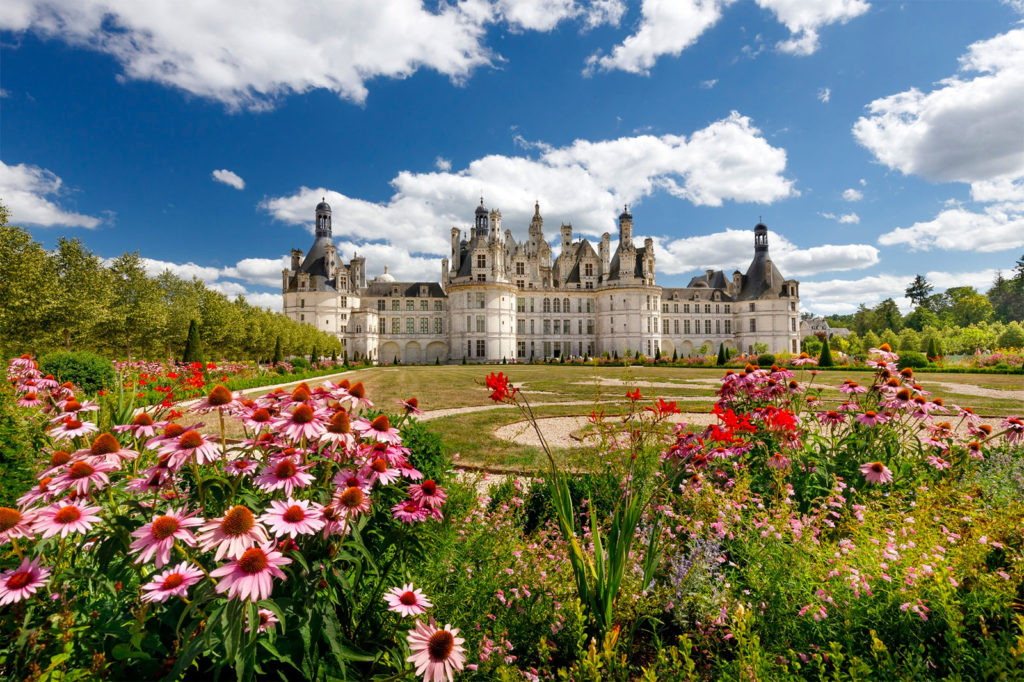
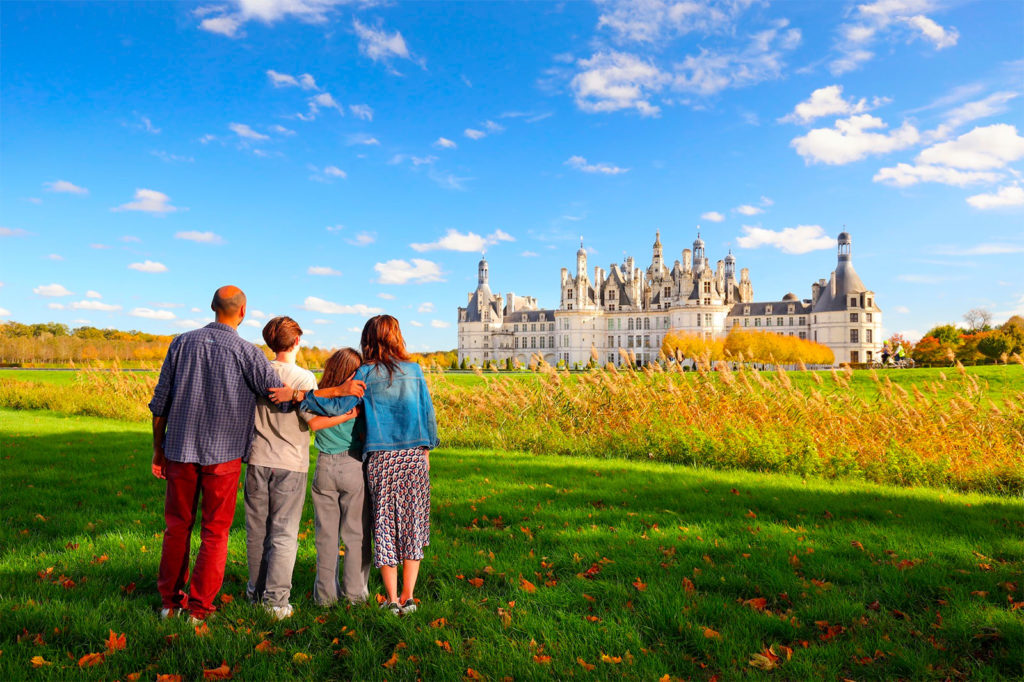
Location of the château de chambord
Situated in the Loire Valley, Château de Chambord is located in the Loir-et-Cher department of France. The château lies approximately 15 kilometers east of Blois and about 170 kilometers southwest of Paris, making it accessible for both domestic and international tourists.
The Loire Valley is renowned for its concentration of historic châteaux, earning it the nickname “The Garden of France.” This region is celebrated for its vineyards, orchards, and rolling landscapes, offering visitors a picturesque setting.
The château’s proximity to the Cosson River, a tributary of the Loire River, enhances its scenic beauty. The surrounding forest park provides a natural buffer, preserving the site’s tranquility and ecological integrity.
A brief history of the château de chambord
Château de Chambord was commissioned by King Francis I in 1519 as a hunting lodge and a symbol of his power. The construction spanned several decades, with contributions from various architects and artisans.
The château’s design reflects a blend of medieval and Renaissance architectural elements. The central keep, with its four large towers, is reminiscent of medieval fortresses, while the intricate ornamentation showcases Renaissance artistry.
Throughout its history, the château underwent periods of neglect and restoration. During the French Revolution, it was looted, and its furnishings were sold. In the 19th century, restoration efforts were initiated to preserve its architectural integrity.
In 1981, Château de Chambord was designated a UNESCO World Heritage Site, recognizing its cultural and historical significance. Today, it stands as a testament to France’s rich architectural heritage and attracts visitors worldwide.
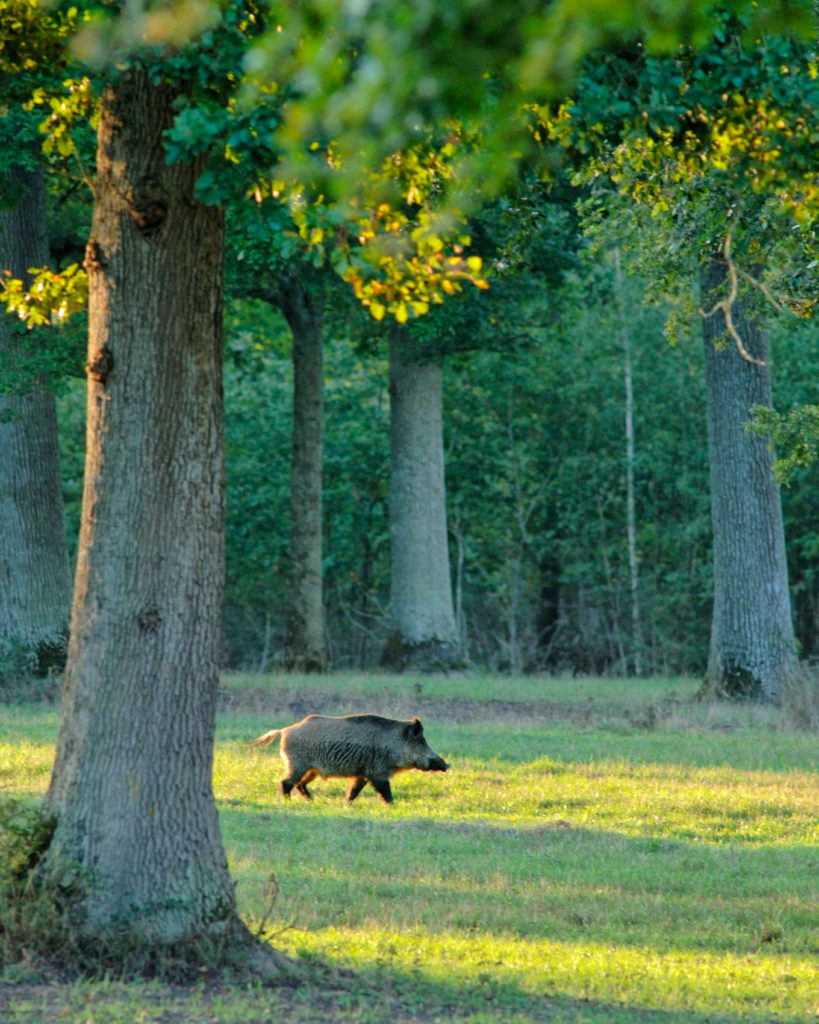
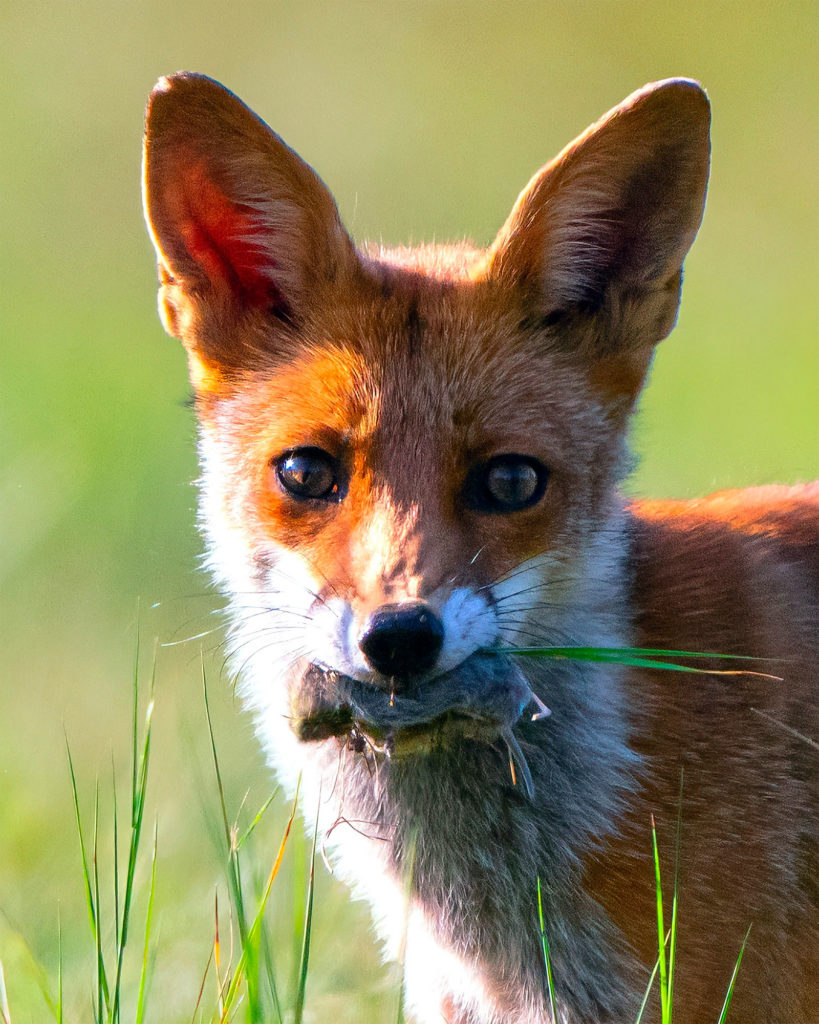
The importance of the château de chambord
Château de Chambord plays a pivotal role in tourism, local symbolism, and the environment.
Tourism
As one of the most visited châteaux in France, Château de Chambord attracts approximately 1 million visitors annually. This influx of tourists significantly contributes to the local economy, supporting hospitality, retail, and service industries.
The château’s status as a UNESCO World Heritage Site enhances its global appeal, drawing international visitors and promoting cultural exchange. Events and exhibitions hosted at the château further boost tourism, providing year-round attractions.
Local symbolism
Château de Chambord serves as a symbol of French heritage and architectural innovation. Its distinctive design and historical significance embody the cultural identity of the Loire Valley and France as a whole.
The château’s image is often used in promotional materials, reinforcing regional pride and attracting investment in cultural preservation and tourism infrastructure.
Environment
The surrounding forest park, spanning over 5,440 hectares, is one of the largest enclosed parks in Europe. It serves as a protected habitat for diverse flora and fauna, contributing to biodiversity conservation.
Environmental initiatives within the park include sustainable forestry practices and wildlife management programs, ensuring the preservation of this natural resource for future generations.
Special features of the château de chambord
Château de Chambord is renowned for several unique architectural and design elements.
Double-helix staircase
The double-helix staircase is a central feature of the château. Comprising two spirals that intertwine without meeting, it allows individuals to ascend and descend simultaneously without crossing paths. This design is attributed to Leonardo da Vinci, reflecting his innovative approach to architecture.
Roofscape
The château’s roofscape is characterized by an array of chimneys, towers, and dormer windows, creating a silhouette reminiscent of a city skyline. This intricate design not only enhances the château’s aesthetic appeal but also serves functional purposes, such as ventilation and lighting.
Symmetry and layout
The château exhibits a symmetrical layout, with a central keep flanked by two wings. This design reflects Renaissance principles of harmony and proportion, emphasizing balance and order in architectural composition.
Decorative elements
Elaborate sculptures, reliefs, and motifs adorn the château’s interior and exterior. These decorative elements depict royal emblems, mythological figures, and natural motifs, showcasing the artistry of the period.
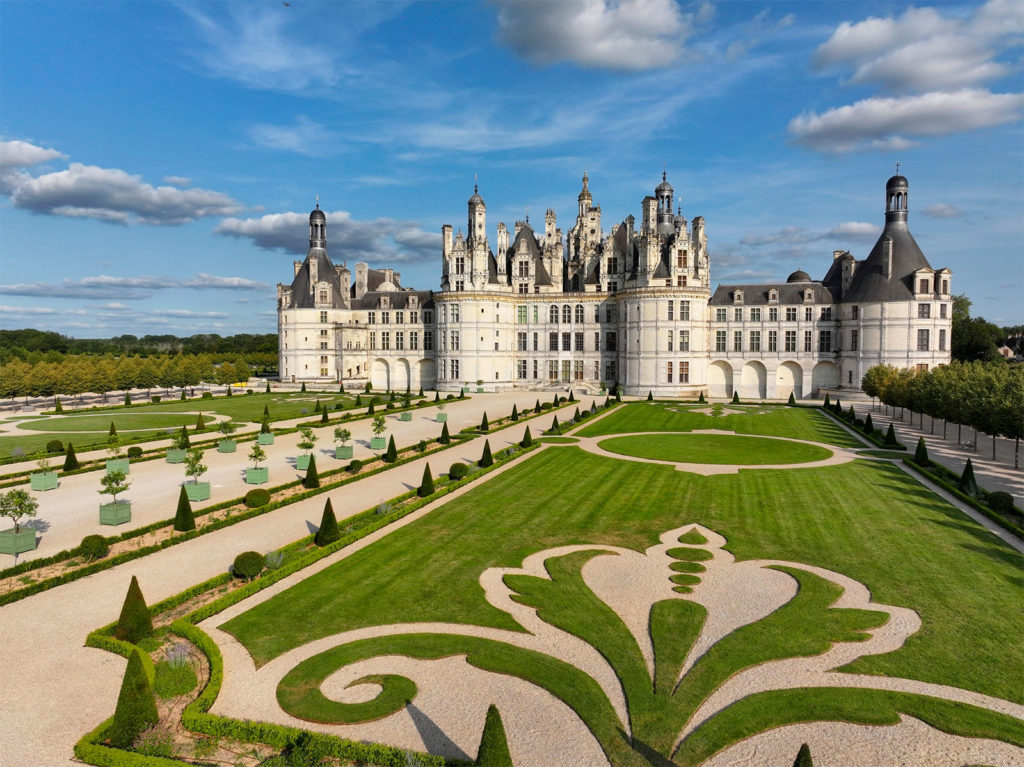
How to visit the château de chambord
Visiting Château de Chambord requires planning to ensure a fulfilling experience.
Access
The château is accessible by various means:
- By car: From Paris, take the A10 motorway towards Orléans, then follow the A71 and A85 to Blois, and continue on the D33 to Chambord. The journey takes approximately 2 hours.
- By train: From Paris, take a train to Blois-Chambord station, followed by a shuttle bus to the château. The total travel time is around 1.5 to 2 hours.
Admission fees
As of March 2025, admission fees are:
- Adults: €14.50
- **Reduced rate (students, seniors (continued from previous section)
- Reduced rate (students, seniors over 65): €12
- Children under 18 (EU residents): Free
- Guided tours: €5 supplement per person
- Car parking: €6 per day
- Local currency equivalent:
- Adult ticket: TND 49, USD 15.60, GBP 12.40
Visitors can also opt for a combined ticket that includes access to the château, its gardens, and a guided tour. Annual passes are available from €25, offering unlimited visits and discounts on events.
Visiting hours
The château is open every day, except January 1st and December 25th.
- April to October: 09:00 – 18:00
- November to March: 09:00 – 17:00
Last entry: 30 minutes before closing time.
The average visit lasts between 2 and 3 hours, but visitors can spend a full day exploring the château and its grounds.
Best time to visit
The spring and early autumn months (April to June, September to October) offer mild weather and fewer crowds. The summer months (July and August) attract the highest number of tourists, which can result in longer queues and limited parking availability.
In winter, the château is less crowded, but daylight is shorter and outdoor exploration limited by weather.
Accessibility
Château de Chambord is wheelchair accessible on the ground floor, and an elevator is available to reach some upper floors. Wheelchairs and baby strollers can be borrowed free of charge at the visitor reception. There are audio guides and visitor booklets in multiple languages.
Services and amenities
The château offers a wide range of visitor services:
- On-site restaurants and cafés
- Picnic areas in the park
- Gift shop selling local products and books
- Bicycle rental for exploring the grounds
- Horse-drawn carriage tours from €14 per adult
- Electric boat rental on the Cosson canal, starting at €20 per hour
During the tourist season, the château also hosts equestrian shows and falconry demonstrations, costing an additional €16 per adult.
Nearby accommodations
The area offers various types of accommodation:
- Hotels in Blois (from €80/night for a 3-star hotel)
- Guesthouses and gîtes near Chambord (from €60/night)
- Luxury options like Relais de Chambord, starting at €200/night
Staying nearby allows early access to the site and the opportunity to explore the forest park, particularly for nature photographers and hikers.
XperienceFrance is your travel specialist in France.
